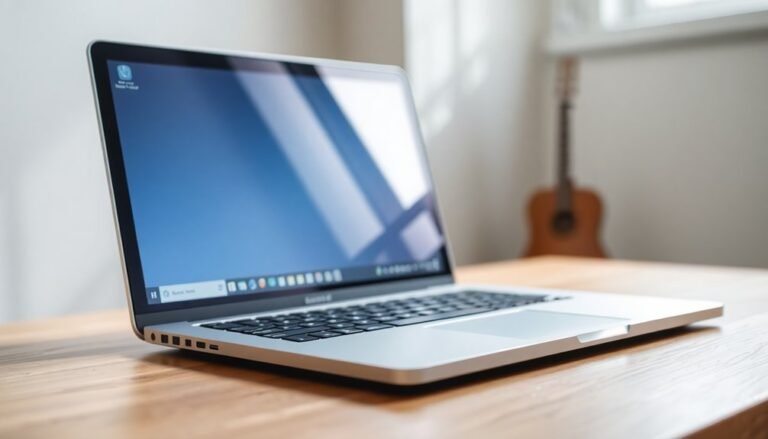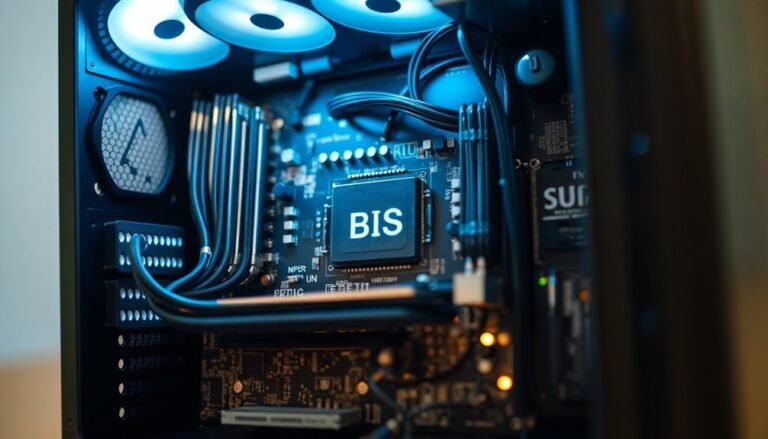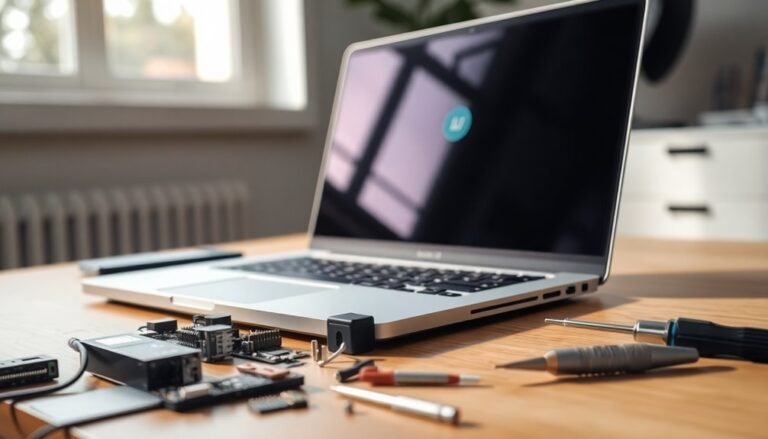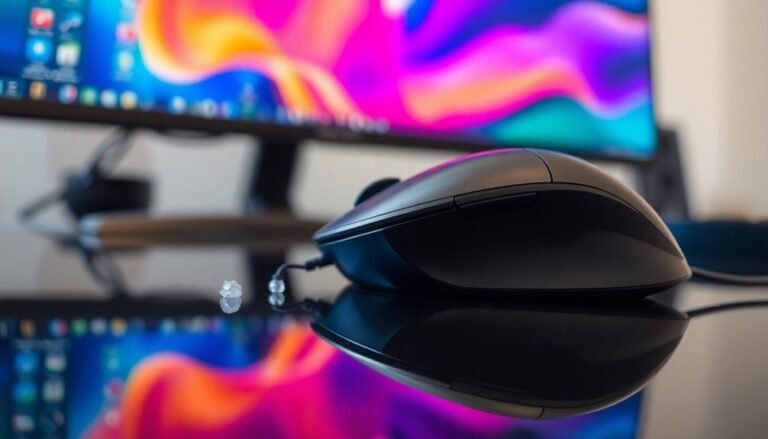Windows 10 Running Slow: Fix Slow Performance After Windows 10 Update

If Windows 10 runs slow after an update, start by checking for disk space issues on your C: drive. Run built-in tools like SFC and DISM to repair system files.
Update your device drivers and clear temporary files. Disable unnecessary startup and background programs using Task Manager.
Verify that your hardware meets current system demands. If these steps don’t boost performance, further techniques and deeper troubleshooting can help resolve persistent issues more effectively.
Common Causes of Slow Performance After a Windows 10 Update
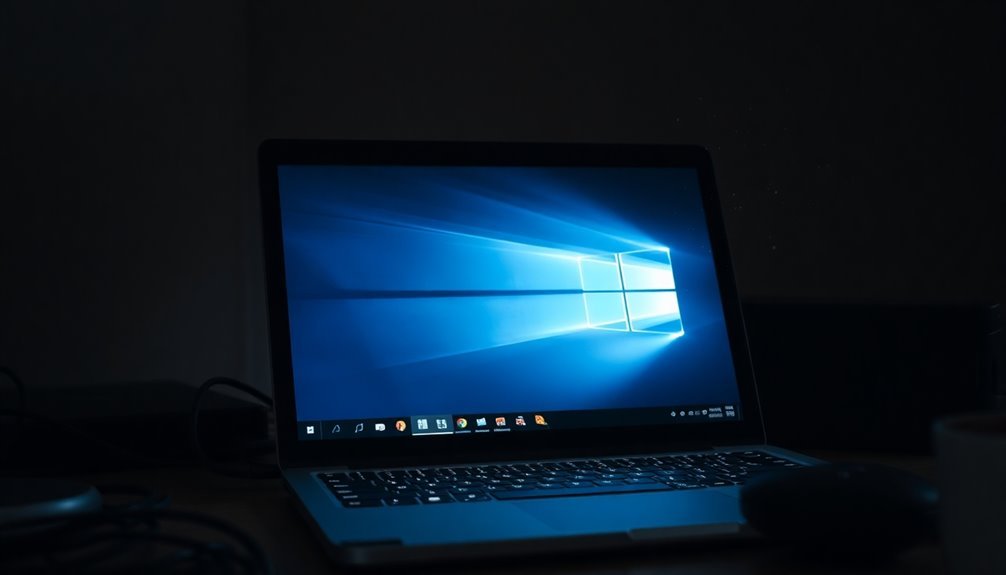
Common Causes of Slow Performance After a Windows 10 Update
Experiencing slow performance after a Windows 10 update is a frequent issue caused by several key factors affecting your PC’s efficiency. One major reason is low disk space on the C: drive. When your system drive is almost full, Windows struggles to handle temporary files and update caches properly, resulting in slow startup times and lagging applications.
Windows updates need sufficient free space to install updates and perform rollbacks; insufficient storage can lead to slowdowns or installation failures. Low C drive disk space is a major factor in slow performance and should be checked and managed regularly after updates.
Another common cause is aging hardware. Older CPUs, limited RAM, or outdated graphics cards may not keep up with the increased demands of new Windows 10 features, causing sluggish user interface responses and longer application load times.
Outdated or incompatible device drivers also contribute to slowdowns since feature updates often require the latest drivers for optimal performance.
Additionally, unnecessary background processes and bloatware installed during updates can consume valuable CPU and memory resources, further slowing down your system.
To improve Windows 10 speed after an update, it’s important to identify and address these issues by freeing up disk space, updating drivers, removing unwanted software, and considering hardware upgrades if needed.
Checking for System File Corruption and Running Repairs
How to Check for System File Corruption and Run Repairs in Windows 10
If you experience persistent slowdowns after a Windows 10 update—even after freeing up disk space and updating drivers—system file corruption might be the root cause. To fix this, start by running the System File Checker (SFC) tool. Here’s how:
- Open an elevated Command Prompt: Click Start, type cmd, right-click Command Prompt, and select Run as administrator.
- Type `sfc /scannow` and press Enter.
- Wait for the scan to complete. This process will automatically detect and repair corrupted system files.
If SFC detects issues but can’t repair them, use the Deployment Image Servicing and Management (DISM) tool to fix the underlying Windows image:
- Open Command Prompt as administrator.
- Run the command: `DISM /Online /Cleanup-Image /RestoreHealth`
- Ensure you have an active internet connection, as DISM may download necessary repair files.
In cases where SFC can’t complete its scan or repair, reboot your PC into Safe Mode or use Windows 10 installation media to run SFC offline. Use the following command with the correct offline parameters for your system:
“`
sfc /scannow /offbootdir=C: /offwindir=C:Windows
“`
Additionally, check your disk’s health by running the Check Disk utility:
- Open Command Prompt as administrator.
- Enter `chkdsk C: /f /r /x` and press Enter.
- You may need to reboot your computer to allow chkdsk to fix errors.
After completing these steps, reboot your PC to apply all repairs. Sudden shutdowns or power failures can often interrupt the file writing process, leading to system file corruption that slows down your computer.]
Monitoring scan results carefully will help determine if further troubleshooting is needed.
Following this comprehensive guide ensures your Windows 10 system remains stable and performs optimally after updates.
Freeing Up Disk Space and Cleaning Up the C Drive
How to Free Up Disk Space and Clean the C Drive on Windows 10
Windows 10 updates often leave behind unnecessary files that clutter your C drive and slow down your PC. To free up disk space and improve system performance, follow these effective cleanup tips for your C drive.
Enable Storage Sense in Windows 10 by navigating to Settings > System > Storage > Configure Storage Sense. Set Storage Sense to run automatically to delete temporary files, clear the Recycle Bin, and remove items from the Downloads folder that are older than 30 days. This helps keep your C drive clean without manual effort.
Use the built-in Disk Cleanup tool to free disk space by removing previous Windows installations, system cache, update files, and other unnecessary data. You can run Disk Cleanup manually for immediate space recovery or schedule it for regular maintenance.
To gain additional space, selectively compress rarely used folders. Right-click the folder, select Properties > Advanced, and check “Compress contents to save disk space.” Avoid compressing critical system folders to maintain optimal PC performance.
Manage OneDrive storage by syncing only essential folders to your PC while keeping less-used files online, saving local disk space on your C drive.
Finally, disable hibernation by opening Command Prompt and running the command `powercfg -h off`. This deletes the large hiberfil.sys file, freeing up substantial disk space.
Managing Background Programs and Startup Items
How to Manage Background Programs and Startup Items to Speed Up Windows 10
Windows 10 updates often introduce new features but can also enable additional background programs and startup items that slow down your PC by consuming CPU, memory, and battery life.
To optimize your system’s performance and regain peak speed, it’s essential to identify and disable these unnecessary processes. Follow these proven steps to manage background apps and startup programs effectively:
1. Disable Background Apps in Windows 10
Go to Settings > Privacy > Background Apps and turn off background activity for non-essential apps. This frees up CPU and RAM, helping your PC run smoother and faster.
2. Manage Startup Programs via Task Manager
Press Ctrl + Shift + Esc to open Task Manager. Navigate to the Startup tab and disable programs that you don’t need to launch automatically. This reduces boot time and frees system resources for important tasks.
3. Adjust or Remove Unnecessary Apps
Head to Settings > Apps > Installed Apps to modify app background permissions or uninstall rarely used applications. Removing unused apps prevents them from running unnecessary background processes that drain your system.
By regularly reviewing and managing background apps and startup items, you can prevent Windows 10 performance degradation and ensure only essential services run in the background.
Optimize your PC today for faster boot times, improved responsiveness, and longer battery life. For more Windows 10 speed tips, visit our blog regularly.
Updating Device Drivers and Resolving Compatibility Issues

How to Update Device Drivers and Fix Compatibility Issues After Windows 10 Update
After a Windows 10 update, outdated or incompatible device drivers can cause slow system performance, hardware malfunctions, and stability problems. To fix these common Windows 10 issues, it’s essential to update your device drivers promptly.
Step 1: Open Device Manager by typing “Device Manager” in the Windows search bar. Right-click on the device you want to update, then select “Update driver” to automatically search for the latest driver version.
Step 2: For critical hardware like graphics cards or network adapters, download the latest drivers directly from the manufacturer’s official website. Trusted sources include Intel Driver & Support Assistant and NVIDIA GeForce Experience, which provide automatic driver updates tailored to your hardware.
Step 3: Before installing new drivers, uninstall outdated versions to prevent conflicts and ensure a clean installation. This step helps avoid common driver-related errors and improves system stability.
If you notice lag, UI slowdowns, or other issues after updating drivers, check the installed driver version against the manufacturer’s latest release. Consider rolling back to a previous stable driver version if problems persist.
Use Windows Update history and driver update logs to identify and troubleshoot problematic updates efficiently. Additionally, leverage the Windows Device Troubleshooter tool to detect and resolve persistent driver conflicts automatically.
Regularly maintaining and updating your device drivers enhances compatibility, boosts system performance, and protects against security vulnerabilities.
Keep your Windows 10 PC running smoothly by following these expert tips to update device drivers and resolve compatibility issues effectively. For more Windows troubleshooting guides and driver update solutions, browse our tech support resources.
Addressing Hardware Limitations and Resource Constraints
If your Windows 10 PC is running slow after an update, hardware limitations and resource constraints are often the main causes.
Windows 10 updates typically demand more CPU power and RAM, which can overwhelm older systems. Insufficient RAM, especially less than 8GB, creates bottlenecks that affect multitasking and running modern apps smoothly.
Outdated processors and integrated graphics often struggle with the updated operating system, resulting in lag and stuttering during heavy tasks. Additionally, storage health significantly impacts performance; full or aging HDDs and SSDs slow down read/write speeds, reducing overall system responsiveness.
Power supply problems and poor thermal management can cause CPU throttling, further decreasing speed.
To fix hardware-related slowdowns on Windows 10, focus on these key areas:
- Check your RAM and CPU specs; upgrade if below recommended levels for Windows 10.
- Monitor your storage device health and free up space or upgrade to a faster SSD for better performance.
- Ensure your PC has stable power delivery and adequate cooling to avoid thermal throttling issues.
Addressing these hardware and resource constraints is essential for optimizing Windows 10 performance after updates.
For more tips on speeding up Windows 10, explore our detailed troubleshooting guides.
Step-by-Step Troubleshooting Methods to Restore Speed
Step-by-Step Guide to Speed Up Windows 10: Troubleshooting Tips for Faster Performance
Is your Windows 10 PC running slow? Follow this comprehensive troubleshooting guide to restore speed and improve system performance.
Start by restarting your computer to clear RAM and stabilize your system. Next, disable unnecessary background apps by navigating to Settings > Privacy > Background apps, reducing resource usage that slows down your PC.
Use Task Manager to disable non-essential startup programs, speeding up boot times and overall responsiveness.
Optimize system performance by going to System Properties > Advanced > Performance Settings and selecting “Adjust for best performance” to reduce visual effects and free up system resources.
Keep your Windows 10 updated by installing the latest Windows updates and device drivers, which fix bugs and enhance hardware compatibility. If updates fail, run the Windows Update Troubleshooter for quick fixes. Ensure your BIOS and firmware are current to maintain system stability.
Run a full antivirus scan using Microsoft Defender or a trusted security tool to eliminate malware that might be slowing down your PC. Monitor Resource Monitor for unusual process activity that impacts performance.
Free up disk space by using Disk Cleanup to remove temporary files and uninstall large or unused programs. If you use a traditional hard drive (HDD), defragment it regularly to improve data access speed.
Run the “chkdsk” utility to check and repair disk errors. Consider disabling Fast Startup in power options if your PC experiences slow boot times.
For persistent slow performance, use System Restore to revert to an earlier stable state or reset Windows 10 as a last resort. Always back up important data before performing system resets.
Frequently Asked Questions
Will a Windows 10 Reset Delete My Personal Files and Applications?
If you choose “Keep my files,” Windows 10 reset preserves personal files in your user folders but deletes all installed applications and resets settings. Always back up important data externally, since apps and custom configurations won’t remain.
How Can I Prevent Future Slowdowns After Windows Updates?
To prevent future slowdowns after updates, always install the latest Windows and driver updates, disable unnecessary startup programs, maintain at least 20% free disk space, run regular disk cleanups, and monitor update logs for installation issues.
Is Upgrading to an SSD Necessary for Better Windows 10 Performance?
Upgrading to an SSD feels like releasing lightning in your system—it’s not mandatory, but you’ll notice drastically faster boot times and app launches. For peak Windows 10 performance, prioritize SSD installation, enable TRIM, and monitor drive health.
Can Third-Party Optimization Tools Help Speed up Windows 10 After Updates?
Yes, you can use third-party optimization tools to boost Windows 10 speed after updates, but prioritize trusted software. Always back up data, avoid registry cleaners, and monitor changes to prevent instability or data loss during troubleshooting.
How Do I Contact Microsoft Support for Unresolved Performance Issues?
When you hit a brick wall troubleshooting, visit Microsoft’s Contact Support page, clearly describe your issue, and select “Contact Support” to chat or request a call-back. Use the Get Help app or Quick Assist for direct remote assistance.
Conclusion
Picture your PC humming smoothly, windows opening in a snap, and files appearing instantly. By checking for system errors, cleaning up your C drive, updating drivers, and managing startup programs, you’ll cut through the digital clutter. If you still feel lag, it’s time to check your hardware. Stay proactive—keep your system lean and up to date. With these steps, you’ll turn slow performance into a memory and restore your Windows 10’s speed.

